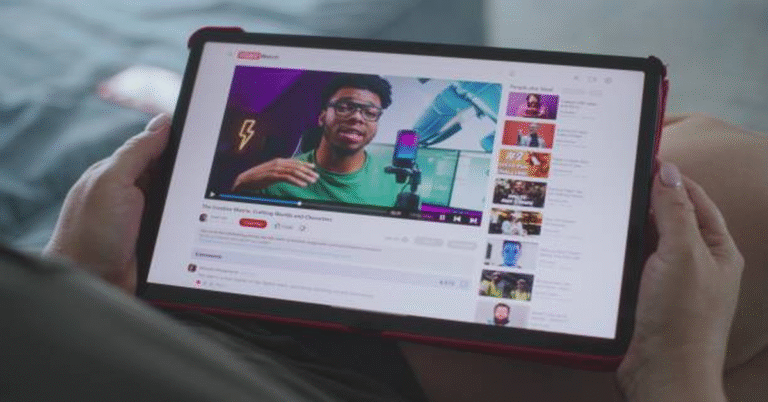
The term “Connected Sport” has emerged as a defining concept in the 21st century. No longer do sports exist in isolated arenas; instead, they are intricately linked with technology, data, global communities, and interactive experiences. Connected sport refers to the integration of digital systems, wearable technology, analytics, and communication tools into the world of athletics—creating a comprehensive network that benefits athletes, coaches, fans, and organizations alike.
This detailed article explores the concept of connected sport from every angle. We will examine its history, present applications, emerging technologies, challenges, and future possibilities. The content is written in carefully developed sections, ensuring deep insights without superficial explanations.
Defining Connected Sport
At its simplest, connected sport means linking traditional sports with modern technology to enhance experiences and outcomes. This connection manifests in several forms:
- Wearables that track athlete health and performance.
- Smart stadiums with integrated Wi-Fi, apps, and interactive fan experiences.
- Digital platforms that broadcast live events and allow fan interaction.
- Data analytics used by coaches for strategy and training.
- Virtual and augmented reality that bring fans closer to the action.
Thus, connected sport is not a single invention but a network of innovations that collectively transform how sports are played, managed, and enjoyed.
Historical Evolution of Connected Sport
While the phrase is modern, the connection between sport and technology has evolved gradually.
| Era | Developments | Impact |
|---|---|---|
| Pre-1980s | Basic stopwatches, manual recording, radio broadcasts. | Limited data, fan experience focused on live attendance. |
| 1980s–1990s | Television broadcasts, early heart-rate monitors, digital scoreboards. | Expanded fan reach; basic athlete monitoring. |
| 2000s | Rise of internet streaming, wearable fitness trackers. | Global sports accessibility, personal training integration. |
| 2010s | Advanced GPS trackers, data analytics, smartphone apps. | Precision training, fan interactivity, smart stadiums. |
| 2020s | AI, VR/AR, blockchain tickets, cloud-based performance analysis. | Fully immersive, global, real-time connected sport. |
This timeline illustrates how sports have become increasingly connected, moving from analog tracking to real-time, global networks of information and interaction.
Key Technologies Driving Connected Sport
The connected sport ecosystem is powered by diverse technologies, each contributing to athlete performance, fan engagement, and organizational efficiency.
1. Wearable Technology
Devices such as smartwatches, GPS vests, and biometric sensors track heart rate, oxygen levels, speed, distance, and recovery patterns. These data points allow athletes to adjust training programs and prevent injuries.
2. Artificial Intelligence (AI)
AI is used in match analysis, predictive modeling, injury risk assessment, and fan personalization. Algorithms transform raw data into actionable insights for coaches and broadcasters.
3. Virtual & Augmented Reality (VR/AR)
Fans can use VR headsets to experience games as if they were in the stadium, while AR overlays enhance live broadcasts with statistics and player information.
4. Internet of Things (IoT)
Connected devices in stadiums, gyms, and homes ensure seamless communication—like smart balls measuring speed or shoes tracking running mechanics.
5. Cloud Computing
Performance data, fan engagement metrics, and global broadcasting are stored and analyzed in the cloud, enabling real-time access worldwide.
6. Blockchain and NFTs
Digital ticketing, anti-fraud verification, and fan engagement collectibles are becoming common through blockchain systems.
Connected Sport for Athletes
For athletes, connected sport is a revolution in training, performance monitoring, and career longevity.
- Training: Data-driven training plans tailored to individual physiology.
- Recovery: Monitoring fatigue, hydration, and muscle stress to prevent injury.
- Performance Feedback: Instant statistics during practice or matches.
- Career Longevity: Injury prevention through predictive modeling extends professional years.
Athlete Data Categories
| Data Type | Devices Used | Benefits |
|---|---|---|
| Physical | GPS trackers, accelerometers | Measure speed, distance, movement efficiency |
| Biological | Heart-rate monitors, hydration sensors | Assess health and readiness |
| Psychological | Mood-tracking apps, sleep monitors | Improve mental resilience |
| Tactical | Game video analysis, AI tools | Enhance decision-making and strategy |
The ability to gather and interpret such diverse data creates athletes who are not just stronger but also smarter.
Connected Sport for Fans
Fans are at the heart of the connected sport experience. Previously limited to watching from stadium seats or television, they now enjoy interactive, personalized, and immersive connections.
- Smart stadiums provide Wi-Fi, seat-ordering services, instant replays, and AR-based entertainment.
- Streaming platforms allow fans worldwide to access games live or on-demand.
- Fan apps deliver real-time statistics, highlights, and exclusive content.
- VR experiences give fans front-row perspectives without leaving their homes.
- Social media creates direct communication between fans and athletes.
This connected ecosystem has democratized access, making sports global and inclusive.
Connected Sport for Coaches and Teams
Coaches and team managers leverage connected sport technologies for tactical, medical, and organizational improvements.
- Game Strategy: AI analyzes opponent patterns to refine tactics.
- Player Management: Data on fitness levels helps optimize rotation and substitutions.
- Medical Care: Early detection of injuries prevents career-threatening damage.
- Recruitment: Data scouting systems identify talent worldwide.
- Business Decisions: Fan engagement data informs marketing and sponsorship.
In this way, teams become data-driven organizations where every decision is informed by precise insights.
Connected Sport in Education and Grassroots Programs
The concept extends beyond professional leagues. Schools, universities, and grassroots organizations adopt connected sport tools to enhance learning and development.
- E-learning platforms integrate sports science with digital classrooms.
- Wearables allow coaches to monitor young athletes’ growth safely.
- Global competitions are streamed online, giving young athletes visibility.
- Inclusive access ensures that even children in remote regions connect with global sports communities.
This democratization builds a stronger foundation for future sports excellence.
Economic Dimensions of Connected Sport
Connected sport is not just a cultural or athletic phenomenon—it is a significant economic engine.
Revenue Streams in Connected Sport
| Category | Examples | Economic Impact |
|---|---|---|
| Technology Sales | Wearables, VR headsets, smart stadium tools | Billions in global consumer markets |
| Media Rights | Streaming platforms, digital broadcasting | Largest source of revenue for major leagues |
| Fan Engagement | NFTs, online merchandise, interactive apps | Expands monetization opportunities |
| Data Services | Analytics software for teams and leagues | Growing demand among professional organizations |
| Smart Infrastructure | Connected stadiums and arenas | Multi-billion-dollar global investments |
The connected sport industry is projected to grow rapidly as new technologies emerge and fan expectations rise.
Social and Cultural Impacts
Connected sport is not only about economics or performance—it also influences social identity and global culture.
- Global Communities: Fans from different countries connect instantly.
- Cultural Integration: International events like the Olympics are enriched by digital storytelling.
- Inclusivity: People with disabilities can engage through adaptive technologies.
- Lifestyle Shifts: Fitness apps and wearables extend connected sport into everyday life.
Ethical and Privacy Concerns
While connected sport brings innovation, it also introduces challenges:
- Data Privacy: Athletes’ biometric data may be misused if not protected.
- Digital Divide: Access may be limited in underdeveloped regions.
- Commercialization: Over-monetization risks alienating fans.
- Mental Health: Constant tracking may create pressure for athletes.
Addressing these concerns is crucial for maintaining trust and fairness in connected sports systems.
The Future of Connected Sport
Looking ahead, the future of connected-sport appears even more immersive and personalized.
- AI Coaches: Virtual assistants guiding athletes with personalized feedback.
- Metaverse Stadiums: Fans attending digital matches in virtual worlds.
- Advanced Biometrics: DNA-based insights for training and recovery.
- Global Access: Low-cost technologies expanding reach to developing regions.
- Sustainability: Smart stadiums running on renewable energy and green tech.
The integration of sports with cutting-edge innovations suggests a future where the boundaries between the physical and digital worlds continue to blur.
Lessons from Connected Sport
The journey of connected-sport provides several important lessons:
- Adaptation is Key – Sports organizations must evolve with technology.
- Data Drives Progress – Accurate analytics improves performance and decision-making.
- Fans Demand Immersion – Engagement must go beyond passive viewing.
- Equity Matters – Technologies should be accessible, not exclusive.
- Balance is Vital – Technology must complement, not replace, the human spirit of sport.
Conclusion
Connected sport symbolizes a new era where athletes, coaches, fans, and communities interact through technology-driven systems. From wearables to smart stadiums, from grassroots programs to billion-dollar leagues, connected sport transforms not only how games are played but also how they are experienced and understood.
As we step further into the digital age, the concept of connected-sport highlights the balance between tradition and innovation, physical excellence and technological intelligence, personal performance and collective experience. It is a reminder that while sports may evolve, their unifying power remains constant—now amplified by technology.
FAQs
1. What is connected sport?
Connected sport is the integration of technology, data, and communication systems into sports to enhance performance and fan engagement.
2. How does connected sport help athletes?
It provides real-time monitoring, performance analytics, recovery insights, and injury prevention through wearable and digital technologies.
3. What role do fans play in connected sport?
Fans benefit through smart stadiums, live streaming, apps, VR/AR experiences, and social media interaction with teams and athletes.
4. What are the challenges of connected sport?
Challenges include data privacy, commercialization risks, unequal access due to the digital divide, and psychological pressure on athletes.
5. What is the future of connected sport?
The future includes AI-driven coaching, metaverse stadiums, sustainable smart infrastructure, and more inclusive, globalized participation.






